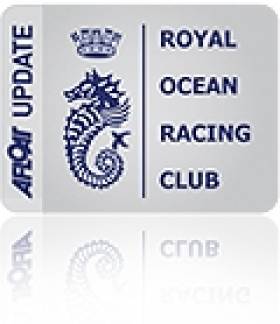Displaying items by tag: Round the Island
#FerryNews - What about taking a novel excursion this summer as the Isle of Man Steam Packet offer the popular annual 'Round the Island' cruise this month, bringing an opportunity to take in the spectacular Manx coastline.
The Steam-Packet which makes the Isle of Man easily accessible with routes from Dublin, Belfast, Heysham and Liverpool, will operate Ben-My-Chree on the evening cruise this month on Saturday, 23 June.
The cruise taking around 4 hours to circumnavigate the largest island in the heart of the Irish Sea, departs the Manx capital, Douglas (at 7pm).
Among the cruise's coastal attractions is the Calf of Man, a 250 hectare island separated from the mainland by the narrow waters of Calf Sound. At Peel is the Viking constructed 11th century Peel Castle perched on St. Patrick's Isle that is connected to the harbour town by a causeway.
In addition the many offshore views of rural landscapes and on stretches rising steeply to mountainous terrain leading to the interior. The island's highest peak, Snaefell is 2,037 feet (620.9 m) above sea level from where the island's only other commercial port is Ramsey.
So come on board the recently overhauled, Ben-My-Chree, from where you can soak up the stunning rugged coastline while enjoying a meal which is included in the fare, costing just £28.00 for adults. Fares for children are £15, again inclusive of a main meal, drink (non-alcoholic) and ice cream.
During the cruise, the bar will not be open during the sailing as the vessel is not licensed to sell alcohol while cruising within Manx waters. If you would like to enjoy an alcoholic beverage with your meal the operator says that you can bring your own (BYO) only for this sailing.
To make a booking please call the operator's Reservations Team on 661661 (IOM), 08722 992 992* (UK) or 0044 8722 992 992* (ROI & Outside UK).
Telephone Opening Hours:
Monday to Friday 0830-1800
Saturday and Sunday 0900-1800
In addition bookings can be made at the Ferry Travel Shop, Sea Terminal, Douglas.
Ten Good Reasons to Sail Lasers in Howth
1) This is the biggest series in Ireland, typically with over 50 entries
2) Howth welcome - great pre and post race social atmosphere in club.
3) Great Racing - Two short races per day, in open water just outside the harbour with committee boat starts. Great way to work on your helming and tactics over the winter.
4) Mix of competition - Sailors range from top 5 ranked sailors all the way through to beginners and casual racers. Ages range from 15-65.
5) Laser Round the Island and Lunch - A legendary, not to be missed end of season race, and party in March.
6) Great value - €4 per race, which covers the lunch in March also!
7) Free boat parking - entry fee also covers parking your boat in Howth the the full winter.
8) Dedicated race course - No other classes racing. Mix of windward leeward and triangle courses.
9) Full Rig, Radial and 4.7 fleets all supported
10) Friendly advice, guidance and help make it a great introduction to dinghy racing
Enter online at www.hyc.ie. For enquiries contact David Quinn 086 2835671
Comm Cuppers Round Island, not Ireland
Two of the three boats in Ireland's Commodore's Cup team are booked in for the annual Round the Island race in the Solent on June 19. The race, which already boasts 1,200 entries, kicks off the day before the Round Ireland, which is struggling to make the 20-entry mark at present.
Anthony O'Leary's Antix and the new Crosshaven-based Corby, Roxy 6 appear in the 399-boat IRC lineup.
Racing 50 miles around the Isle of Wight will no doubt be beneficial for the teams aboard both boats ahead of August's Commodore's Cup, and six Irish boats feature in the IRC section. However, the clash calls into question the timing of the Round Ireland. With the Round the Island, the single most popular sailing event in the British Isles every year, taking place on the solstice weekend, the Round Ireland puts itself at a serious disadvantage in seeking entries at that time.
The chance of tempting boats up from the Solent is lessened, when skippers are faced with a shorter, cheaper and more sociable event at home. And with the Solent a similar distance from Cork, It's no surprise that two of the top boats in Ireland, both based in Cork, have decided to use it as a training event for the Commodore's Cup.
Insiders have already grumbled that this point is one Wicklow needs to address going into the next Round Ireland cycle.
Share your thoughts on Afloat.ie's forum.































































